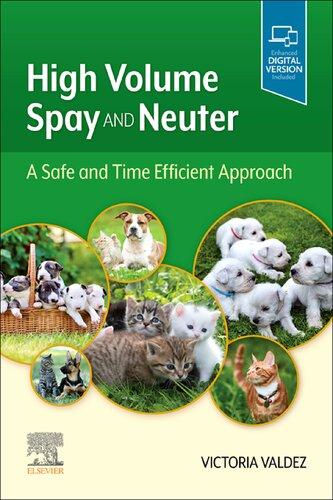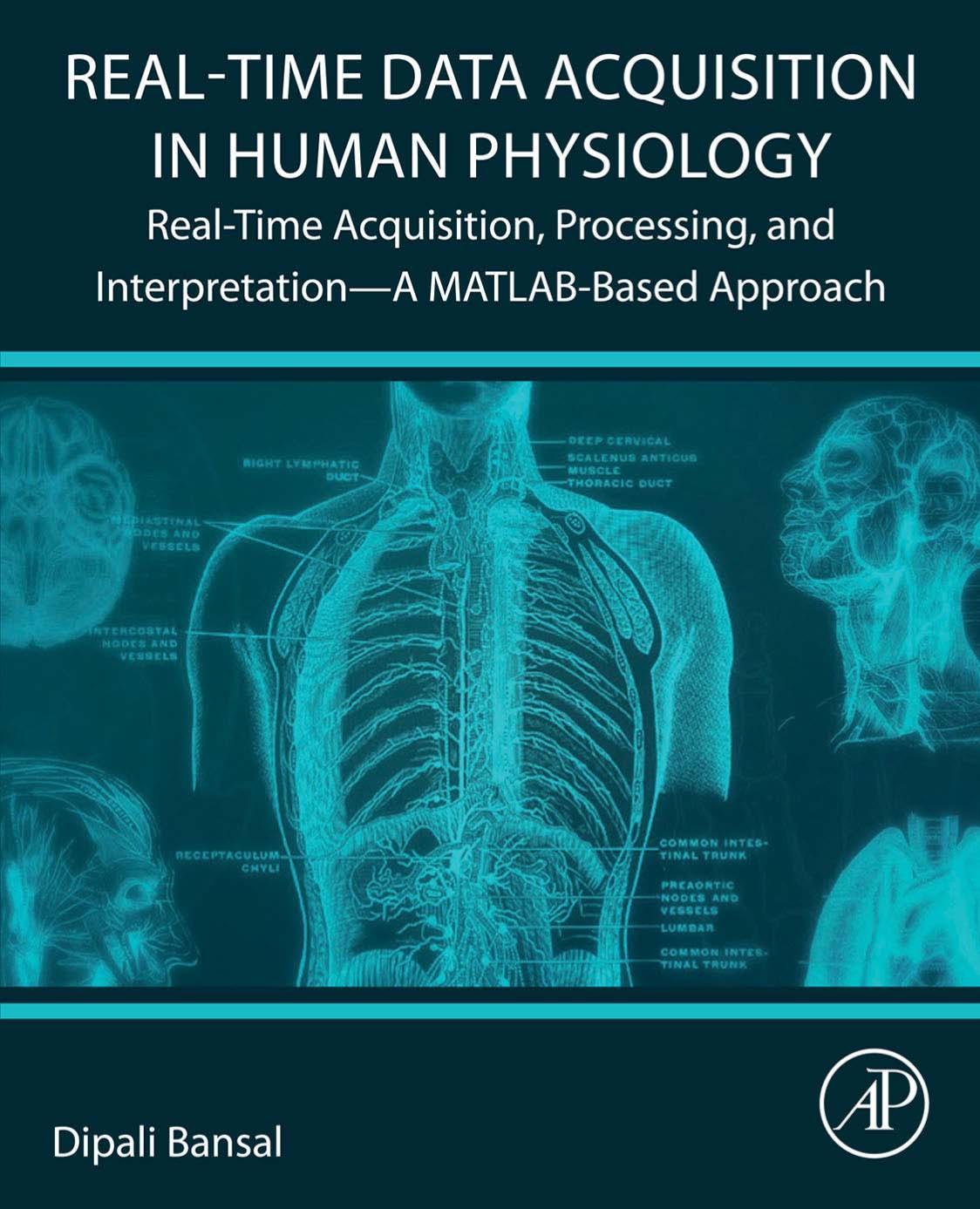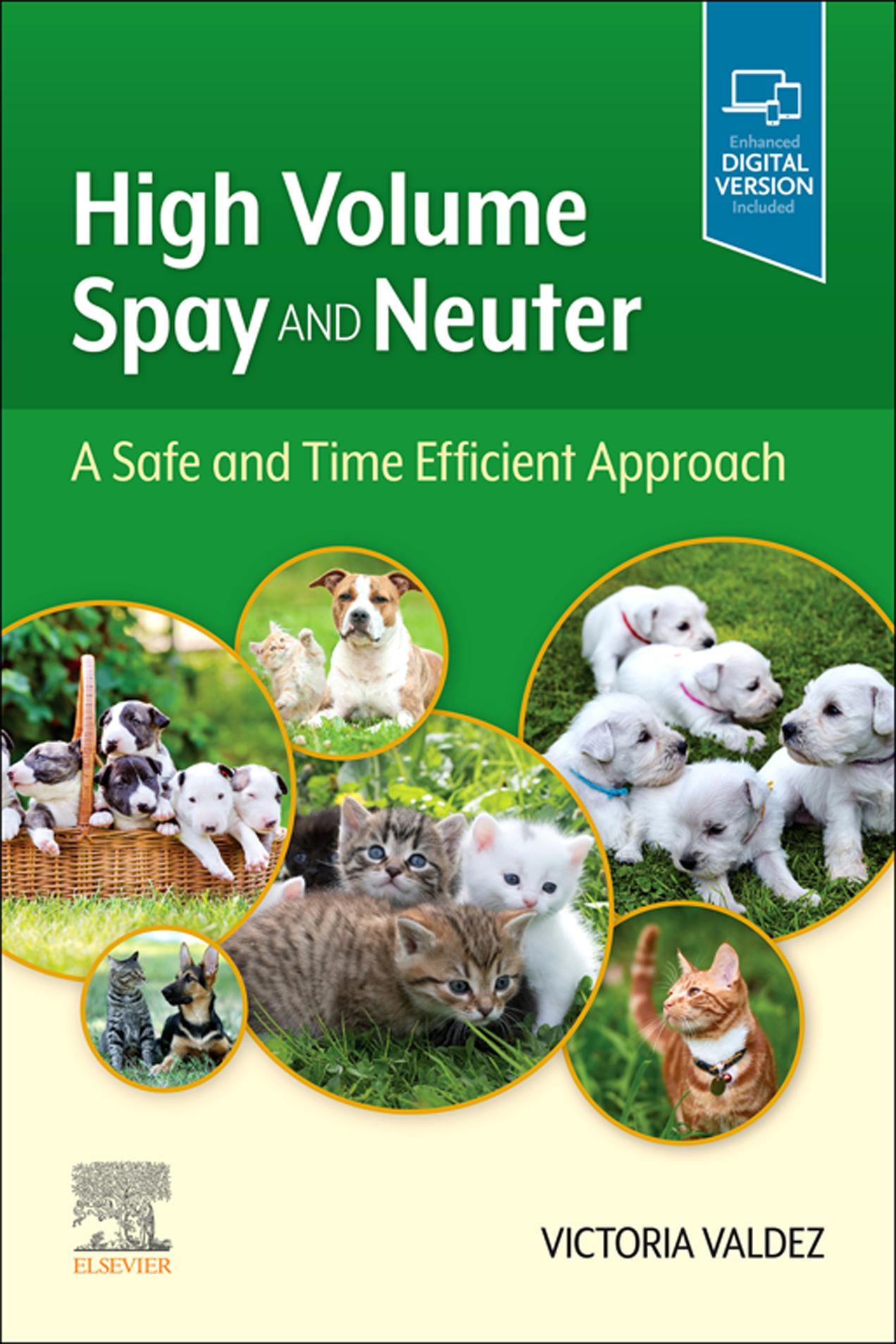High Volume Spay AND Neuter
A Safe and Time Efficient Approach
VICTORIA VALDEZ︎, DVM
Medical Director 2012–2018
Spay-4-LA
Mobile Spay/Neuter Clinic
Los Angeles, CA, USA
Elsevier
1600 John F. Kennedy Blvd. Ste 1800 Philadelphia, PA 19103-2899
HIGH VOLUME SPAY AND NEUTER: A SAFE AND TIME EFFICIENT APPROACH ISBN: 978-0-323-69558-9
Copyright © 2022 by Elsevier, Inc. All rights reserved.
No part of this publication may be reproduced or transmitted in any form or by any means, electronic or mechanical, including photocopying, recording, or any information storage and retrieval system, without permission in writing from the publisher. Details on how to seek permission, further information about the Publisher’s permissions policies and our arrangements with organizations such as the Copyright Clearance Center and the Copyright Licensing Agency, can be found at our website: www.elsevier.com/permissions
This book and the individual contributions contained in it are protected under copyright by the Publisher (other than as may be noted herein).
Notice
Practitioners and researchers must always rely on their own experience and knowledge in evaluating and using any information, methods, compounds, or experiments described herein. Because of rapid advances in the medical sciences, in particular, independent verification of diagnoses and drug dosages should be made. To the fullest extent of the law, no responsibility is assumed by Elsevier, authors, editors, or contributors for any injury and/or damage to persons or property as a matter of products liability, negligence or otherwise, or from any use or operation of any methods, products, instructions, or ideas contained in the material herein.
Library of Congress Control Number: 2021933380
Senior Content Strategist: Jennifer Catando (Flynn-Briggs)
Content Development Manager: Meghan Andress
Content Development Specialist: Kevin Travers
Publishing Services Manager: Deepthi Unni
Senior Project Manager: Manchu Mohan
Design Direction: Renee Duenow
Printed in the United States of America.
This volume is dedicated to my father, Rudy Valdez, who began instilling in me a love of books even before I could talk.
This page intentionally left blank
Over the last 10 years, I have had the privilege to work with some wonderful organizations and individuals in the Southern California high-volume spay/neuter community.
The first spay/neuter relief job I had was with Angel Dogs. Thank you to Lisa Tipton for taking a chance with me and referring me to the nonprofit, Spay-4-LA, where I worked full time for the next 8 years and was the medical director for 6 years.
Thanks to everyone at Spay-4-LA for seeing me through my growing pains. A special thank you to all the lay staff and especially to my manager, Sandy Sagastume.
I’d like to express my appreciation to my friend, Karn Myers, who owns FixNation, a state-of-the-art, nonprofit facility for the spay/neuter of feral cats, and all the doctors who work there to combat cat overpopulation. While at FixNation, I learned to do an autoligation feline spay. Thank you to Dr. Yikcia (Milanes) Pope for sharing her knowledge of this technique with me. A special thank you to Dr. Kate Creighton, who taught me how to assess the gestational ages of feline fetuses, and Dr. Derek Turner, who taught me how to tie a Miller’s knot. On behalf of all the cats you have helped, I applaud everyone on staff at FixNation.
Working at the shelter run by Riverside County, Department of Animal Services, has given me a broader understanding of the unique challenges that confront a government-owned facility and the outstanding job that this organization does. A shout-out to the staff for their dedication and the great job they do. Special thanks to head veterinarian, Sara Strongin, and my immediate supervisor, Katherine Buff.
In between and to supplement the above positions, I have often done relief work at other facilities such as Spay/Neuter Project, LA, Humane Society of San Bernardino, Mary S. Roberts, Pet Adoption Center, and others. Thank you to those facilities. I have learned valuable information everywhere I have worked.
Through these facilities, I have worked with numerous pet rescue organizations whose efforts on the part of homeless animals are no less than herculean. It takes all of us working together to make any appreciable headway in the fight to combat pet overpopulation and the inherent animal suffering it fosters.
Thank you to all who fight for those who cannot fight for themselves.
Victoria Valdez, DVM
This page intentionally left blank
This page intentionally left blank
Principles of High-Volume Spay/ Neuter
Victoria Valdez, DVM
The first question veterinarians new to high-volume spay/neuter always ask is, “How can I get faster?” Unfortunately, when we use words like “faster” and “speed” in the context of highvolume spay/neuter, the image we conjure is one of rushing through a surgery. There is a perception among the public, as well as some full-service veterinarians, that high-volume spay/neuter veterinarians rush through their surgeries, implying that they are sloppy. Nothing could be further from the truth. If a surgeon rushes through procedures, there are bound to be complications. Nothing consumes time like complications, whether it means having to redo something during surgery or having to address a complication via a recheck. Therefore, a high-volume spay/neuter surgeon cannot possibly be “sloppy” and “fast”; the two terms are contradictory.
How then is the demand of high-volume spay/neuter practice met? The name itself indicates that an inordinate number of surgeries are performed in a day. A typical high-volume practice completes an average of 30-plus surgeries a day. This is achieved by a combination of judicious scheduling, clockwork-like teamwork, and overall efficiency.
The primary goal in high-volume spay/neuter practice is to be efficient, that is, to SAFELY perform a sterilization surgery in as little time as possible while doing a QUALITY job. This chapter deals with the principles used in high-volume spay/neuter that directly relate to achieving efficiency. Subsequent chapters will detail how to institute these principles.
PRINCIPLES OF HIGH-VOLUME SPAY/NEUTER
The Purpose of High-Volume Spay/Neuter is Trifold
The purpose of high-volume spay/neuter is trifold: to address the problem of pet overpopulation, to serve an underserved population, and to do so in a fiscally responsible manner.
The many benefits of sterilization of dogs and cats are well documented. Sterilization prior to adoption decreases the number of unwanted pets in shelters and rescue agencies. Controlling the numbers in free-roaming cat populations has many benefits to those cats and to the community.
High-volume spay/neuter makes sterilization available to low-income pet owners. For these owners, the cost of traditional surgery performed at a full-service hospital is often prohibitive.
The only way to serve the high numbers in this demographic in a fiscally sound manner is with a highly efficient program. Since the numbers involved in these scenarios are so high, it is generally more fiscally sound to establish a high-volume spay/neuter program in conjunction with organizations devoted to addressing the problem of homeless pets than it is to avail the services of full-service veterinary practices.
A High-Volume Problem Requires A High-Volume Solution
The numbers of unwanted pets born each year is staggering. If there is any hope of curbing this overpopulation problem, pets need to be sterilized in matching numbers.
The Unique Client Base Associated With High-Volume Spay/Neuter Practice must be Factored into Protocols
High-volume spay/neuter practices serve low-income populations. These clients do not have the financial means to pay emergency fees if complications arise. By necessity, all adults in these households may work, meaning patients are often left unsupervised and/or outdoors postoperatively, putting them at higher risk for complications. Additional measures, such as using stronger suture for these surgeries, should be considered. Elizabethan collars and thorough aftercare instructions are imperative. The use of prophylactic antibiotics is controversial, and a discussion of their use is beyond the scope of this text. However, if you are seeing a lot of rechecks involving infected incisions due to exposure to dirt, you may want to review the pros and cons of their use and consider adding them to your protocol.
Certain Risks are Built into High-Volume Spay/Neuter
Because of time and financial constraints, high-volume spay/neuter patients do not routinely have preop bloodwork done. They do not have intravenous (IV) catheters placed, and they do not receive IV fluids. In young healthy animals this is seldom a problem. A problem arises with young animals with occult disease, or older patients with undiagnosed underlying disease. Since owners in this population often cannot afford a preliminary workup, it becomes a question of risk vs. benefit.
Certain Benefits are Built Into High-Volume Spay/Neuter
The surgeon doing high-volume spay/neuter typically has much more experience doing spays and neuters than the typical general practice veterinarian. He or she is therefore able to do the surgery in less time via a much smaller incision. The smaller incision makes for less pain postoperatively. The shorter surgery time means the patient is under anesthesia for a much shorter time, thereby decreasing anesthetic risk, and making the need for IV catheters and fluids and a preliminary workup less imperative, in most cases. The high-volume spay/neuter surgeon also often has more experience handling any spay/neuter-associated complications that might arise.
The Caseload must be Balanced
The caseload for each day must be realistic. Although the goal is high volume, it is not just about numbers. It is not realistic to expect one surgeon to do 30 large canine spays in a day. On the other hand, 60 feline spays in a day is totally doable. The goal is to schedule a good mix of the different types of sterilization surgeries over the course of a day.
Workstations should be Set up for Maximum Efficiency
Workstations should be in locations and set up such that minimal steps are needed to complete all necessary tasks. All supplies should be within easy reach of the person needing them. There should be a consistent place for all necessary supplies and a clear, concise system for keeping them well stocked.
Doctor and Staff must Work in Concert with Each Other as a Team
No one team member is more important than another. Everyone must help each other. If one team member is overloaded, the others, including the doctor, must help, or the system will break
down and efficiency will be lost. Doctors should learn to be as self-sufficient as possible. If the support staff has to stop to help the doctor open a pack of suture, for example, that will delay getting the next patient on the table.
The Surgery Table Should Never be Empty
Patients should flow on and off the table. As one patient comes off the surgery table, another should be put on. Time without a patient on the table is called lag time. Lag time, if extended, can greatly diminish productivity. No matter how fast or efficient a surgeon is, he or she cannot complete a surgery if there is no patient on the table.
Little Things can Add up to Large Amounts of Time Saved
What may seem like trivial details that save only seconds of time can in fact add up to significant time saved. Remember when doing 30 surgeries a day, if 2 minutes a surgery is saved, that adds up to an hour. That hour can be an hour saved in wages, six to eight more surgeries performed, or a shorter working day for you.
The Surgeon’s Time Should be Reserved for Surgery
The surgeon has a finite number of hours in his or her working day. If a surgeon averages a surgery every 10 minutes, for example, for every 10 minutes he or she spends doing nonsurgery tasks, that is one fewer surgery that will be done that day. No one else can do the actual surgery. So, for maximum production, as much as is possible, the surgeon should do what only the surgeon can do, i.e., surgery.
Safety Always takes Precedence Over Speed
If the surgeon needs to enlarge an incision, it should be done. If more ligatures are needed, they should be placed. If the patient needs fluids, an IV catheter should be instilled, and fluids given. Trying to save time when these more time-consuming steps are indicated will only end up costing precious time and could compromise the patient. Being safe will always save time in the long run by eliminating those time-consuming preventable complications.
Protocol Changes must Meet Safety Standards
Sometimes this means changes made for time efficiency need to be counterbalanced with steps to improve safety. For example, if a suture pattern involving just one knot is used to save time, that should be counterbalanced by applying a couple extra throws to the knot and applying a drop of glue to it (if it is in the skin) to enhance safety.
Efficiency, not Speed, is what Makes High-Volume Spay/Neuter Possible
It is impossible to do 30 or more surgeries in a day just by going faster. Modifications from standard surgical techniques have to be implemented to make them more efficient. Components such as scheduling, set-up, teamwork, and flow are just as vital as the surgical technique to maintaining productivity. There is no one silver bullet to accomplish this. Instead numerous small details are modified so that as a whole they streamline the working day.
Every Effort should be Made to Make Rechecks Unnecessary
Thirty surgeries in a day is doable in a well-organized high-volume spay/neuter practice, but there is not a lot of time left over for seeing rechecks. One or two rechecks can throw the schedule off balance, and more than one or two can wreak havoc. Adherence to the principles listed here will help to minimize the number of rechecks that are presented and the time they take away from surgery time.
High-Volume Spay/Neuter Surgeons Must be Prepared for Unforeseen Complications
Complications occur despite a surgeon’s best efforts. They occur for all surgeons. If the surgeon is prepared when, not if, complications arise, it is easier to stay calm and do what needs to be done.
Nothing Trumps Experience
If you are new to high-volume practice, unless you have had a LOT of experience doing fullservice spay/neuter, do not expect to start out doing 30 surgeries a day. Do not expect to do keyhole incisions immediately, and it is unlikely you will do 10-minute spays. Those things come with experience, and there is no substitute for experience. If you are unable or feel uncomfortable gaining on-the-job experience, consider volunteering for a rescue organization. Since they will not be paying you, they will be ahead of the game for ANY surgeries you perform. If you are an employer looking to hire a veterinarian who is NOT experienced in high volume, recognize the limitations and do not overbook, or your doctor will become overwhelmed. Your patience will be rewarded as your surgeon becomes more efficient with experience. In my opinion, the best scenario for a novice spay/neuter veterinarian is when the high-volume practice is brand new. In this case, the number of patients per day and the surgeons, experience can grow in tandem as both are becoming established.
Scheduling
Victoria Valdez, DVM
Many times, scheduling protocols are already set at a preexisting high-volume spay/neuter practice. However, the principles discussed in this chapter may be of value when establishing a new practice or attempting to improve use of time in an existing practice. Since various sterilization surgeries require different amounts of time to complete, the ability to complete 30 surgeries a day is very dependent on how many of each type surgery are scheduled. Doing 30 surgeries of one type is not the same as doing 30 surgeries of another type. It is often impossible to do 30 large canine surgeries in a day. However, it would not be unheard of to do 90 or more feline neuters in a day. All the surgeries in a day are seldom all the same type. In fact, a balanced mix of surgery types is the ultimate goal.
FACTORS TO CONSIDER WHEN SCHEDULING SURGERIES
Predictable Factors
The size and species of patients scheduled for a given day greatly influence the time required to complete that schedule. The fastest surgery is a cat neuter, followed by a cat spay, a small dog spay, and then a large dog spay. We can predict how long each of these routine surgeries takes. We can use that knowledge to attempt to schedule a manageable surgery docket.
Unpredictable Factors
Unfortunately, noting the types of patients scheduled still falls short of measuring all the factors that influence a surgeon’s ability to complete a given number of cases in a day. Other, less predictable factors that influence how long it takes to do a given surgery include complications (see Chapters 18 and 19), pregnancy, obesity, cryptorchidism, adhesions due to previous surgery or disease, and/or a fractious temperament. Any of these factors, if present, can and will prolong surgery times. These factors are often not revealed at the time an appointment is made and so cannot reliably be factored in when scheduling. They should, however, be considered when assessing productivity; i.e., if the number of surgeries is fewer than expected for a given day, it may be because some of these problems were encountered. This makes judicious attention to scheduling a manageable case load, based on factors we do have control over, even more important.
FACTORS THAT LIMIT THE NUMBER OF SURGERIES THAT CAN BE DONE IN A DAY
Average Surgery Time for Each Sterilization Type
For the purposes of this discussion, average surgery time will be defined as the time (in minutes) it takes the surgeon to do a medium sterilization surgery, i.e., a small canine spay (under 40 lb, 18 kg) and/or a standard-technique feline spay. (This time is measured from the time the patient
gets on the table until the time the next patient gets on the table.) The time it takes to do either of these surgeries is similar. They are among the most common surgeries performed in high-volume spay/neuter practice, and the time they require is midrange along the spectrum of surgery types seen. Time several (8–10) small canine spays and average them to determine your AVERAGE SURGERY TIME.
Length of Surgery Time Available Per Day
Multiply the number of surgeon’s hours per day by 60 to get the number of minutes in a surgeon’s day. An 8-hour day equals 480 minutes. Subtract the average number of minutes before the first patient is on the table (first patient set-up time). The first patient set-up time is usually around 15 minutes. (Yours may vary.) Subtract this number again to allow for getting the first patient on the table after lunch. (Surgeons should set up surgery and then scrub while the first patient is being set up [induced, intubated, and prepped] so that no time is wasted while waiting for that first patient.) If the 30 minutes set-up time is subtracted from 480 minutes, the result is 450 minutes of SURGERY TIME AVAILABLE per 8-hour day. If the surgeon is doing the exams, time used for exams has to be subtracted from SURGERY TIME AVAILABLE, and this will greatly reduce the number of surgeries that can be done in a day.
Examination Time
Receptionists should be trained to ask admission questions, or a questionnaire regarding the patient’s current health should be filled out at the time of admission. The person admitting the patient should do a cursory check for a nasal or ocular discharge, trouble breathing, dehydration, or weakness. If any of these things are present, the surgery should be postponed and the patient should be referred for a medical workup.
It is more efficient if exams are not done in the presence of the owners because their questions often slow down the exam time. Staff doing intake should be well trained to answer common questions owners have. It is helpful to have a manual(s) listing common questions and answers on hand that the staff can refer to.
In a typical high-volume spay/neuter practice, the morning is spent on intake, doing exams, and administering premed drugs to the day’s patients. In most cases, due to fiscal constraints, presurgical blood work is not available for these patients. The physical exam is the only way to assess their current health and therefore is of utmost importance. On pets that can be handled, a minimum database should include the following:
n Weight and temperature.
n Auscultation of the heart and lungs.
n Examination of the teeth for tartar, infection, and retained deciduous teeth.
n Gender verification and assessment of vulva to check for estrus in canine females.
n Abdominal palpation to check for pregnancy in females.
n Scrotal palpation to check for retained testicles in males.
n Examination of eyes and nose for signs of upper respiratory disease.
n Palpation of the trachea to check for “Kennel Cough” in canines.
Who Does the Examinations
Depending on the laws in the state in which the practice is located, all or some of the exam may be done by a licensed technician. Variations of this include the following:
n The doctor does the entire examination.
n The support staff does only the weight and temp, the doctor does the examination.
n The licensed technician does the examination, the doctor auscults the heart.
n The licensed technician does the examination and brings any abnormalities to the doctor’s attention.
n Only you can determine what works best for your practice.
If the surgeon is doing the examinations, the time it takes to complete these must be subtracted from his or her total surgery time available for the day. It is most productive if the surgeon’s time is used for what only the surgeon can do, i.e., surgery. Where state law allows technicians to do examinations, it is most efficient if they are done before the surgeon begins his or her day. (This often necessitates that licensed techs work a 10-hour day so that they can do exams before the surgeon arrives and discharge patients at the end of the day, after the surgeon leaves.)
To determine the time needed for the surgeon to do examinations, time how long is spent on them (including time to premed) each day for several days. Divide that number, in minutes, by the number of patients seen that day to determine how much time per patient is needed for examinations.
The Number of Large Animals Scheduled Per Day
Large or obese female canines are wearing on the surgeon because of the increased difficulty of doing large dog spays. The overall number of large animals, both male and female, is wearing on the staff that has to lift them on and off the table and in and out of cages. They also exact a toll if they are uncooperative and it is necessary to wrestle with them to accomplish exams and induction. Consider limiting the overall number of large canines, 40 lb (18 kg) and over, to six per day.
CALCULATIONS
Calculating How Many Surgeries Can Be Done in a Day
To calculate the number of patients that can be operated on in a day, use the following formula:
Availablesurgeryminutes
Numberofsurgeri ( ) ees Day
Averagesurgeryti mmeAverageexamtime
For example, if your average surgery time is 15 minutes and your average exam time is 5 minutes:
450availablesurgeryminutes
(15minutesaveeragesurgerytime5minutesaverageexa mmtime)
If you are not doing exams:
450availablesurgeryminutes 15minutesave rragesurgerytime 30surgeries 8-hourday
22.5surgeries 8-hourday
Calculating What an Average Surgery Time Needs to Be to Complete a Given Number of Surgeries
in a Day
If you know how many surgeries you want to do in a day, you can calculate what your average surgery time needs to be to achieve that goal. Subtract the total minutes you will be spending on exams from your available surgery minutes. For example, if you want to do 30 surgeries and you average 5 minutes per exam, 5 minutes 3 30 surgeries equals 150 minutes. Thus, 450 available surgery minutes minus 150 minutes spent on exams equals 300 available surgery minutes.
(Availablesurgeryminutesminutesspent oonexams)
#ofsurgeriesdesired
Averagesu rrgerytime patient
For example, if you want to do 30 surgeries in an 8-hour day, and you spend 150 minutes on exams, you need to do an average (medium) surgery in 10 minutes.
450availablesurgeryminutes150minutes spentonexams 30surgeries 10minutesaverragesurgerytime patient
If the licensed tech does exams, you have more time per surgery.
450availablesurgeryminutes 30desiredsur ggeries 15minutesaveragesurgerytime pati
eent
A PROPOSED NEW WAY OF SCHEDULING
Why It Is Needed
When scheduling 30 appointments for a high-volume spay/neuter day, if the day is going to be productive, there have to be some guidelines. This proposed scheduling system recognizes and attempts to take into consideration the variation in the time it takes to do various sterilization surgeries. It addresses a problem long inherent in scheduling in high-volume spay/neuter programs. That problem is that simple numbers do not tell the whole story when setting limits for a scheduled caseload. Thirty large canine spays are not equivalent to 30 feline neuters, etc. This system assigns an equivalency number to each of the surgery types seen in a high-volume spay/ neuter practice. The equivalency numbers are based on the time it takes to do each surgery type relative to the time it takes to do an average (medium) surgery.
Relative Surgery Times
Surgery times for various types of surgeries will vary according to the expertise of the doctor and staff and the type of induction used. However, the relative time needed to do a particular type of surgery as compared to doing another type is usually fairly consistent. For example, a large canine spay takes approximately twice as long to do as a small canine spay, and an autoligation feline spay takes half as much time as a small canine spay. For purposes of discussion, I have divided the types of surgeries seen into classes of long, medium, short, and mini, based on the time required to prep them and complete the surgery. Based on the time it takes to do each class of surgery, it can be assigned an equivalency number that reflects how it relates to the average surgery time. This is not an exact system. There are many, many variables influencing surgery times. This system of classification is merely this author’s attempt to establish a somewhat common ground for discussion and a means of making the scheduling protocol more relevant. The classification system and concurrent equivalency numbers are listed in Table 3.1.
TABLE 3.1 n Equivalency Numbers
0.33 Mini
0.5 Short
1 Medium (average)
2 Long
Feline neuters
Canine scrotal (puppy) neuters 3 minutes
Feline autoligation spays
Canine prescrotal neuters
Canine inguinal cryptorchid neuters 5 minutes
Small canine spays (less than 40 lb, 18 kg)
Standard technique feline spays 10 minutes
Large canine spays (40 lb, 18 kg or more)
Abdominal cryptorchid neuters (canine and feline)
Feral cat standard spays, if boxed down 20 minutes
aTimes listed are this author’s average times. Your times may vary, but the times relative to one another should be somewhat consistent.
Equivalency Number Based Scheduling Protocol
n Assign Equivalency numbers
When scheduling, each appointment is assigned an equivalency number based on the above table. (Table 3.1)
n Keep a Running Total
When the equivalency numbers add up to thirty (or whatever number of patients you determine is your limit) the caseload for the day has reached its limit. Keeping track of the running total of equivalency points and when they have reached capacity has to be the responsibility of those making the appointments.
n Factor in “No Show” Rates
If you have a high no-show rate take that into consideration and extend your limits. Surgeries scheduled to allow for no shows should be from the short and mini classifications so that if they do show up the day is not overloaded. For example, once your daily limit of equivalencies has been reached, short and mini surgeries can be added up to a number you have predetermined based on your no-show rate.
A Simplified Scheduling Protocol
Scheduling patients based on equivalency numbers is the most accurate way I have found to ensure a well-balanced surgery schedule. However, it can be rather cumbersome. A somewhat less accurate but more easily implemented protocol, based on the principles outlined earlier, is as follows:
n Establish the maximum number of surgeries and maximum number of large dogs to be scheduled.
n Count every large canine spay as two surgeries.
In other words, for every large canine spay that is scheduled, the maximum number of surgeries goes down by one.
n For example, if your maximum number of surgeries is 30 and you schedule one large canine spay, your new maximum is twenty-nine. If you schedule five large canine spays, your new maximum is twenty-five, and so on.















